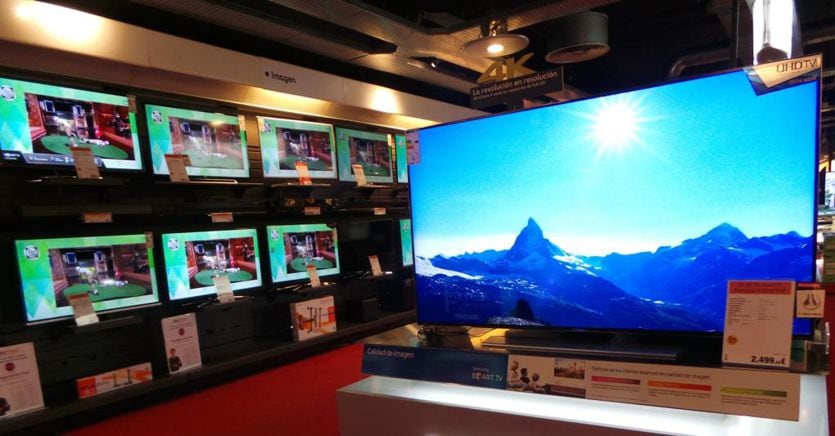The transition is important and coincidentally wants it to fall on a particular recurrence. On 8 March the first phase of the new digital terrestrial television, the so-called
switch off that effectively retires the old DVB-T standard (Digital Video Broadcasting-Terrestrial) to make room for DVB-T2 technology broadcasts and bring viewers to the world of Full HD and “virtually” 4K. The goal of the “platform” change is (in a nutshell) to further improve the visual rendering of high-definition programs but the “reason of state” that imposed it is the need to free frequencies for the benefit of the networks fifth generation mobile phones, frequencies that must be delivered to telephone operators by 30 June this year. The difficulties that accompanied this umpteenth TV revolution are however equally well known and the expected “dead line” at the end of 2022 remained so only on paper, above all at the behest of the broadcasters. In short, the citizen-users must for the moment be satisfied with the first round of functional updates for the adoption of the new system, arm themselves with the remote control for the necessary channel tuning and patiently wait for the certain date (yet to be defined) for the definitive passage. from old to new digital terrestrial.
The changing channels and how to keep watching them in HD
The bad news for those who own a television and a decoder that are not compatible with the Mpeg-4 encoding (which replaces the outdated Mpeg-2) is that from 8 March the viewing of national channels in HD will only be possible in the new format, which means the impossibility of being able to visualize them through the old devices. After the first moves already started in recent weeks for the smaller channels, in the next few days it will be the turn of Rai 1, Rai 2, Rai 3, Rete 4, Canale 5, Italia 1 and La7. From a practical point of view, the HD signal will be transferred from the channels with secondary numbering from 501 onwards to those assigned to the “main” networks of the broadcasters (and therefore 1, 2, 3 and so on). The only exceptions are local broadcasters that broadcast on a regional basis, which will have more time (no later than 30 June) to adapt to the new system, less bandwidth. The Ministry of Economic Development, to obviate the risk of obscuring the flagship channels of Rai and Mediaset for a slice of the population (the elderly in particular) who are not attentive to the timing of the switch off, has thought of a parachute: the transition to the new coding will not be drastic because up to 31 December 2022 the broadcasters will be able to broadcast the old channels in simulcast mode, that is, keeping the old channels alive (on numbering 501 and thereafter) at the same time as the new ones. The doubt of many, waiting for the definitive transition, is that the choice of broadcasting dozens of national channels still with the old Dvb-T standard with Mpeg4 encoding will excessively crowd the available frequency spectrum, reducing the transmission quality.
The TVs involved are few
Checking the compatibility of the old TV with the new broadcasting standard requires a simple operation, that is, tuning to one of the HD channels already active and reachable from 501 onwards. In the presence of a correct display of the image, it means that the TV is enabled to pass and you do not need to do anything for a long time; if this were not the case, it becomes necessary to change the device or add a decoder capable of operating with the Dvb-T2, perhaps taking advantage of the renewed TV bonus also for 2022 (which provides for a maximum of 100 euros for the scrapping of a device prior to the 22 December 2018). It is difficult to quantify the number of televisions affected, we are still talking about appliances with a dozen or more years of age and probably a good portion of these have already ended up in landfills in the last 18 months precisely in relation to the discounts financed by the government for their replacement.
The final passage
Once the first phase of the switch is completed, the path should come to an end in 2023, when all broadcasters will have to adopt a new coding system called Hevc Main10, capable of compressing the high definition signal more than MPEG4 and without compromising it. the quality of the transmission. At that point, the DVB-T2 will be able to completely free up the frequencies of the 700 MHz band in favor of 5G telephony, as required by the ministerial decree of 8 August 2018. Four years have passed, in between an investment of 6.5 billion euros and the usual Italian delays in the implementation of a plan that should have launched Italy in the Olympus of the countries with the highest penetration of ultra-broadband mobile networks.
